We’ve spent countless hours researching and analyzing the 2020 Mitsubishi Outlander to give you the complete picture of this three-row SUV. Whether you’re considering it as your next family vehicle or comparing it against competitors like the Honda Pilot or Toyota Highlander, understanding its strengths and weaknesses is crucial for making an well-informed choice.
The 2020 Outlander sits in a competitive midsize SUV market where value meets practicality. We’ll break down everything from its impressive 10-year powertrain warranty and surprisingly spacious interior to areas where it might fall short of your expectations.
Our comprehensive analysis covers real-industry performance, safety features, fuel economy, and long-term ownership costs. By the end of this review, you’ll know exactly whether the 2020 Mitsubishi Outlander deserves a spot in your driveway or if you should keep shopping.
2020 Mitsubishi Outlander Overview
The 2020 Mitsubishi Outlander enters its ninth year as a midsize three-row SUV targeting families seeking affordability over premium features. Mitsubishi positions this crossover as a value-oriented alternative to mainstream competitors like the Honda Pilot and Toyota Highlander. Our analysis reveals a vehicle that prioritizes practicality and warranty coverage while making compromises in performance and refinement.
Seating capacity reaches seven passengers across three rows with the Outlander’s 105.1 cubic feet of passenger volume. Standard features include a 2.4-liter four-cylinder engine producing 166 horsepower paired with a continuously variable transmission (CVT). Front-wheel drive comes standard while all-wheel drive adds $1,500 to the base price of $25,795.
Interior space allocation favors cargo capacity with 33.5 cubic feet behind the second row and 10.3 cubic feet with all seats occupied. Third-row access happens through a 60/40 split-folding second row that slides and tilts forward. Materials throughout the cabin reflect the budget-conscious positioning with hard plastics dominating surfaces above knee level.
Technology integration centers around a 7-inch touchscreen infotainment system featuring Apple CarPlay and Android Auto compatibility. Higher trim levels add an 8-inch display along with premium audio systems and additional connectivity options. Climate control operates through manual knobs and buttons rather than digital interfaces found in pricier alternatives.
Safety ratings from the National Highway Traffic Safety Administration (NHTSA) awarded the Outlander four out of five stars overall. Forward collision mitigation automatic emergency braking lane departure warning and blind spot monitoring comprise the standard safety suite across all trim levels. These active safety features help offset concerns about the vehicle’s age and dated platform.
| Specification | Value |
|---|---|
| Base Price | $25,795 |
| Seating Capacity | 7 passengers |
| Cargo Space (2nd row up) | 33.5 cubic feet |
| Cargo Space (all seats up) | 10.3 cubic feet |
| Engine Power | 166 horsepower |
| AWD Price Premium | $1,500 |
| NHTSA Safety Rating | 4/5 stars |
Warranty coverage distinguishes the Outlander from competitors with Mitsubishi’s 10-year 100,000-mile powertrain warranty alongside a 5-year 60,000-mile basic warranty. This extended protection addresses reliability concerns that have historically affected the brand’s reputation in the American market. Buyers gain peace of mind through comprehensive coverage that exceeds industry standards by important margins.
Exterior Design and Styling
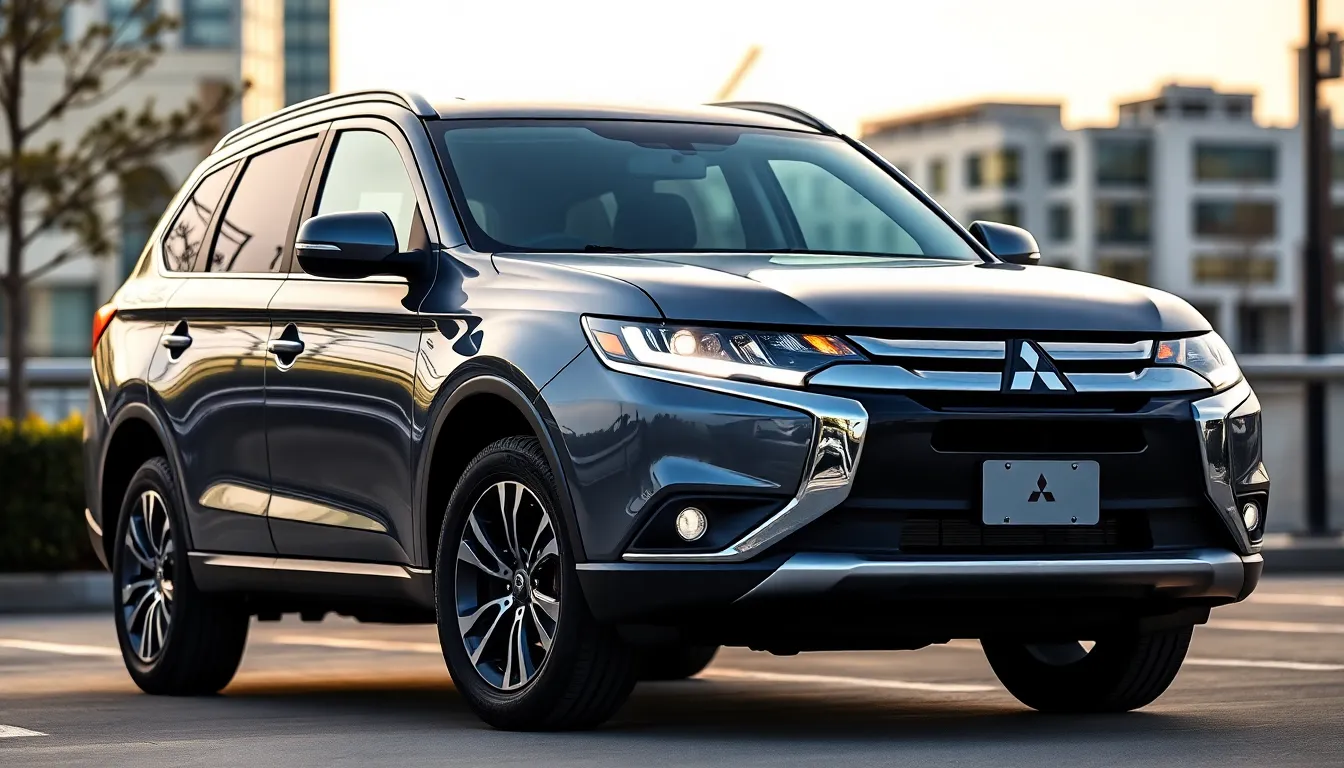
The 2020 Mitsubishi Outlander’s exterior receives notable updates that modernize its overall appearance while maintaining practical SUV proportions. Contemporary styling changes include a redesigned grille and more defined rear end treatment that creates a fresher visual identity compared to previous model years.
Visual appeal gets enhanced through carefully selected design elements including piano black and chrome inlays distributed across the body panels. Matte finish accents around the vehicle perimeter add texture contrast while updated wheel designs contribute to a more upscale appearance. Standard 18-inch aluminum wheels come equipped with optional black lug nuts for buyers seeking additional customization.
| Trim Level | Exterior Features | Lighting Technology |
|---|---|---|
| Base ES | Halogen headlights with LED DRL, LED taillights, heated power mirrors | LED daytime running lights |
| Mid-Level SE | Auto headlights, fog lights, chrome grille accents | Enhanced lighting package |
| Top GT | LED low/high beam headlights, power sunroof, rain-sensing wipers | Full LED lighting system |
Safety integration appears through the exterior mirror design which incorporates blind spot awareness systems and cross-traffic alert functionality. Body-colored mirrors replace basic black units on higher trim levels while rear privacy glass comes standard across all configurations.
Design reception varies among automotive reviewers who note the Outlander’s conservative approach compared to competitors like the Nissan Rogue. Some critics describe the styling as less striking or innovative within the competitive compact SUV segment. Base model buyers encounter limitations including basic halogen lighting and fewer convenience features that appear on upper trim levels.
Distinctive visual elements help the Outlander maintain relevance in a crowded marketplace though it doesn’t achieve the groundbreaking design recognition of segment leaders. Chrome grille accents and updated proportions create adequate road presence while avoiding polarizing design risks that might alienate traditional SUV buyers.
Interior Comfort and Features
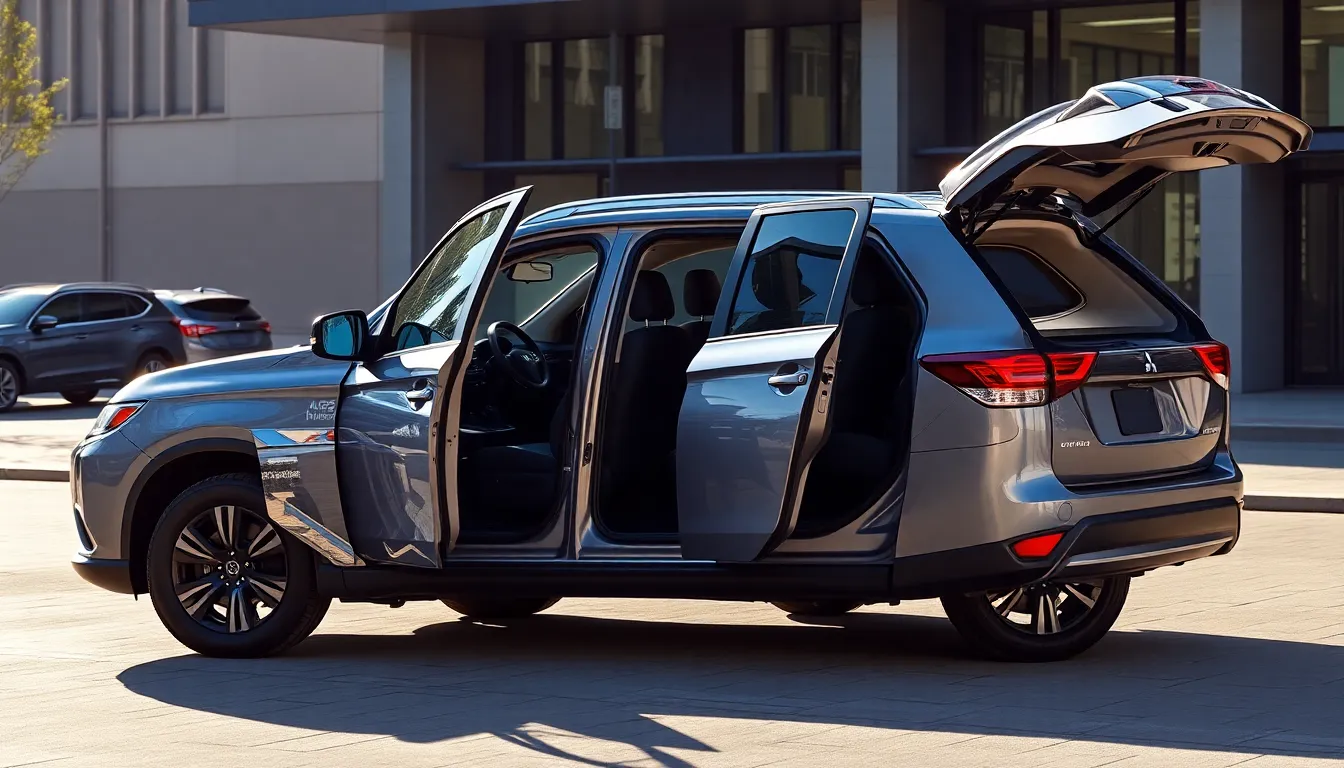
The 2020 Mitsubishi Outlander interior comfort features create a mixed experience for passengers. We found that the cabin provides a generally comfortable ride that cushions occupants from most road imperfections effectively.
Seating and Space
The Outlander’s seating configuration stands out among compact SUVs with its standard third row availability. We appreciate the easy access design that allows passengers to reach the third row without difficulty. Redesigned second row seats contribute to improved passenger comfort during longer journeys.
Adults face important challenges in the third row due to its notably tight dimensions. We recommend reserving the rearmost seats for children or short trips only. Cargo space remains sufficient for most family needs but doesn’t lead the class in overall capacity.
The comfortable ride quality helps compensate for some seating limitations in daily driving scenarios. We noticed that the Outlander smooths out rough terrain well, though vibrations occasionally transmit through the cabin during certain road conditions.
Technology and Infotainment
Technology features in the 2020 Outlander vary significantly by trim level. We found that models above the base ES trim include an updated 8.0 inch infotainment touchscreen as standard equipment. Higher trims also incorporate forward collision warning, lane departure warning, and automatic high beams for enhanced safety.
The infotainment system graphics appear outdated compared to current competitors. We observed that the interface lacks modern features and displays old fashioned visual elements. Interior technology and multimedia capabilities generally lag behind rival vehicles in this segment.
Climate control systems operate effectively across all trim levels. We noted that higher trims provide power adjustable lumbar support for the driver and additional USB ports for rear passengers. These features enhance comfort during extended drives, though the overall cabin materials give the interior a dated and low quality appearance.
| Interior Feature | Performance Rating | Key Details |
|---|---|---|
| Climate Control | Effective | Standard across all trims |
| Third Row Access | Easy | Rare feature in compact SUVs |
| Third Row Space | Limited | Best for children only |
| Infotainment Graphics | Outdated | Old fashioned interface |
| Lumbar Support | Available | Power adjustable on higher trims |
Performance and Driving Experience
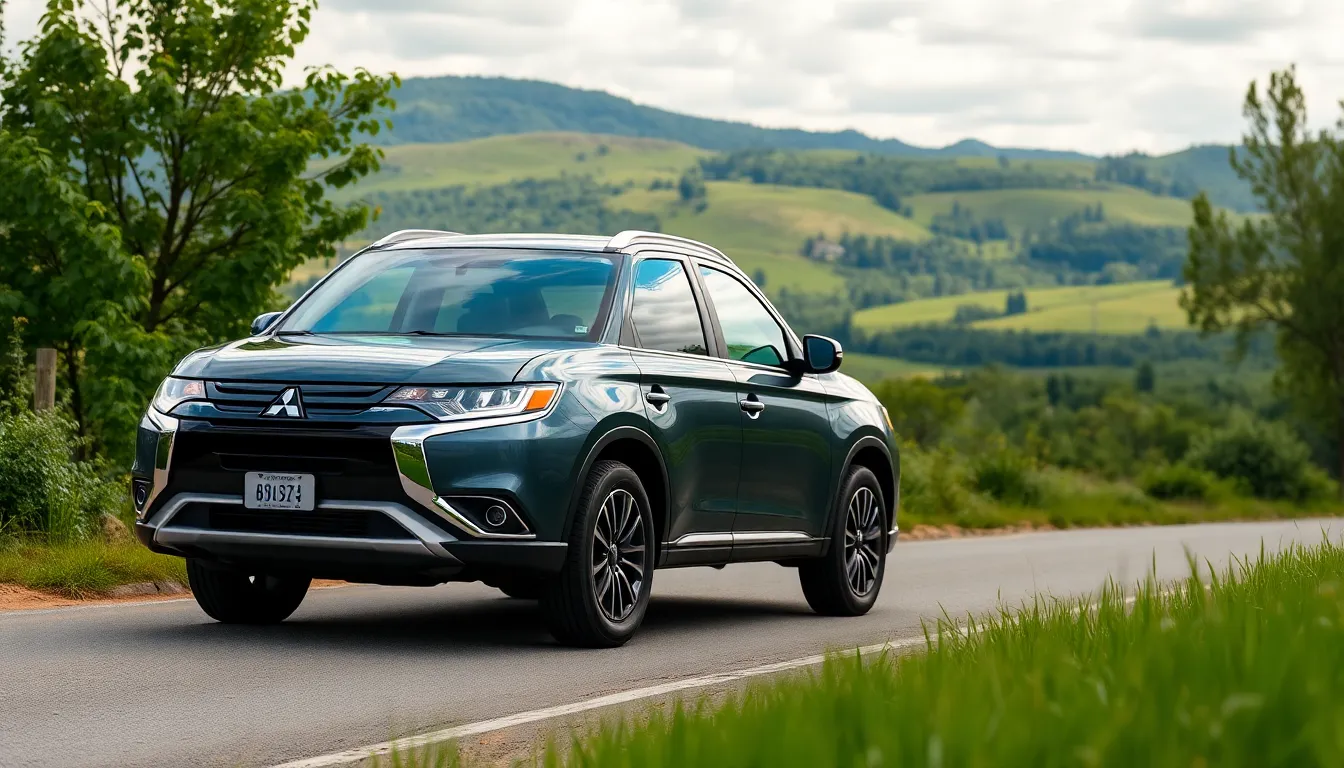
The 2020 Mitsubishi Outlander’s performance capabilities reflect its budget-oriented positioning in the competitive SUV market. We’ve evaluated the Outlander’s powertrains and driving dynamics to help you understand what to expect from daily driving and family adventures.
Engine Options and Power
Standard power comes from a 2.4-liter four-cylinder engine producing 166 horsepower, though acceleration feels sluggish with a 0-60 mph time of approximately 9.6 seconds. This base engine delivers noisy operation that becomes particularly noticeable during highway merging and passing maneuvers.
Available only on the top GT trim, the optional V6 engine provides more responsive acceleration but compromises fuel efficiency significantly. Mitsubishi also offers a plug-in hybrid variant that stands unique in this segment, providing an eco-conscious alternative for buyers prioritizing environmental considerations over pure performance.
Fuel Economy
Efficiency numbers disappoint compared to class competitors, with the base 2.4-liter engine achieving approximately 23 city/28 highway/25 combined mpg in all-wheel-drive configuration. Front-wheel-drive models improve these figures slightly, but the Outlander still trails behind rivals like the Honda Pilot and Toyota Highlander in fuel economy.
Choosing the V6 engine further reduces efficiency, making it less economical for families focused on long-term operating costs. The PHEV model offers different consumption characteristics but represents a significantly higher upfront investment that may not appeal to budget-conscious buyers.
Handling and Ride Quality
Ride comfort stands as one of the Outlander’s strongest attributes, effectively cushioning passengers from road imperfections and providing smooth travel over various terrain types. We found the suspension absorbs bumps well, creating a pleasant experience for both front and rear passengers during longer journeys.
Updated Super All Wheel Control technology in 2020 improves traction and handling capabilities, particularly benefiting all-wheel-drive models in challenging weather conditions. But, braking performance feels “squishy” and requires more pedal pressure than expected, which may reduce driver confidence during emergency stopping situations.
Cabin noise levels exceed what we’d prefer, with noticeable road and wind noise intrusion at highway speeds that can detract from the overall driving experience. Even though these acoustical shortcomings, the Outlander maintains adequate handling characteristics for typical family driving scenarios.
Safety Features and Ratings
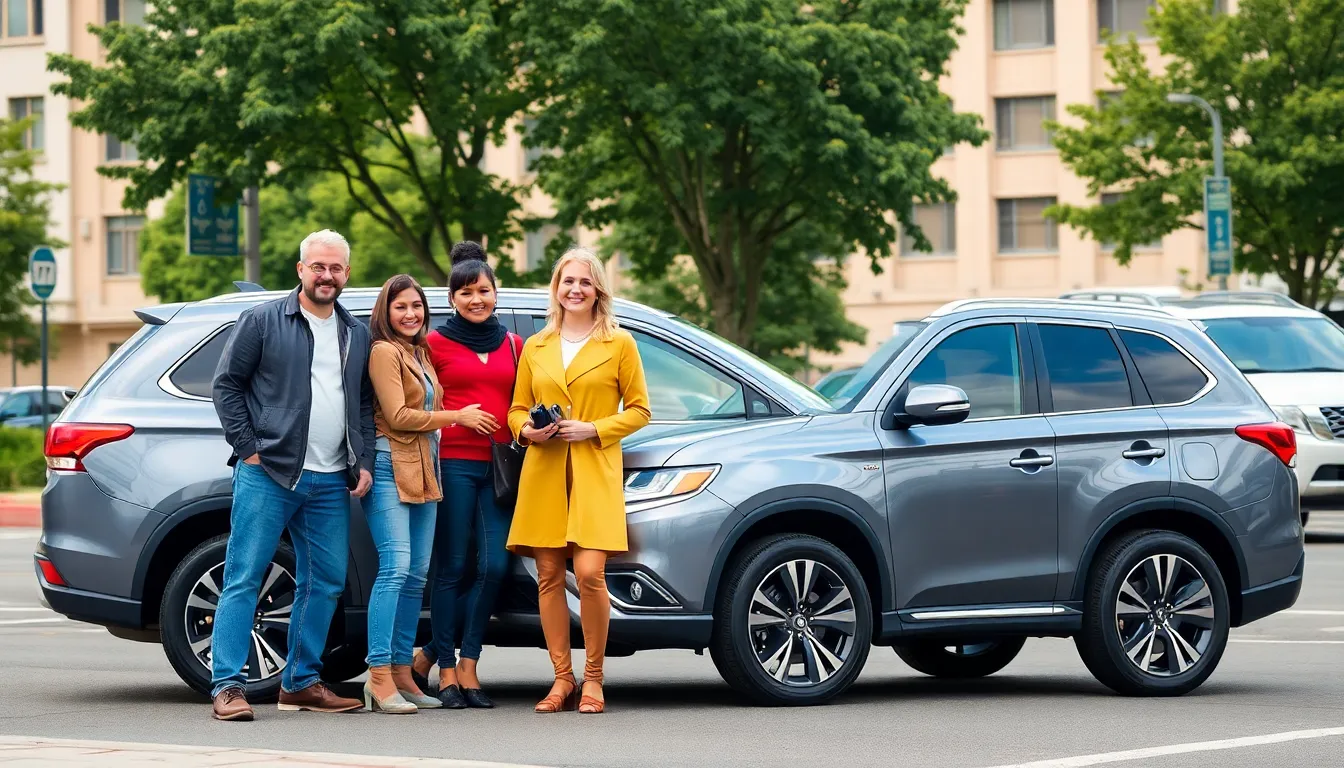
The 2020 Mitsubishi Outlander provides comprehensive safety technologies designed to protect families during everyday driving situations. Forward collision warning and automated emergency braking come standard across various trims, automatically applying the brakes when the system detects potential collisions ahead. These systems successfully avoided crashes in both 12 mph and 25 mph IIHS testing scenarios.
Advanced driver assistance features enhance protection through blind spot monitoring and rear cross traffic alert systems, though these remain optional on most trim levels. Lane departure warning and lane keeping assist help drivers maintain proper road positioning, available on select models throughout the lineup. Adaptive cruise control rounds out the available safety technology package.
Testing Performance Results
The Outlander demonstrates strong crash protection through rigorous safety evaluations. NHTSA awarded the vehicle excellent crash test results, reflecting solid structural integrity during impact scenarios. IIHS testing confirmed the forward collision mitigation system’s effectiveness in avoiding accidents at multiple speeds.
Pedestrian detection capabilities reduce impact speeds across various scenarios, including crossing children and adults in urban environments. The system’s performance varies based on pedestrian movement patterns and environmental conditions during testing.
Safety Ratings Breakdown
| Testing Organization | Overall Rating | Key Strengths |
|---|---|---|
| NHTSA | 4/5 Stars | Excellent crash test results |
| IIHS | Requirements Met | Forward collision avoidance at 12 mph and 25 mph |
Warranty Coverage
Mitsubishi backs the Outlander’s safety systems with comprehensive warranty protection extending 10 years or 100,000 miles for powertrain components. This coverage provides additional peace of mind for families investing in long term vehicle ownership. Safety related components receive standard manufacturer warranty coverage aligned with industry practices.
The combination of active safety features and extended warranty coverage positions the Outlander competitively among three row SUVs prioritizing family protection over premium luxury amenities.
Reliability and Warranty Coverage

Mitsubishi backs the 2020 Outlander with one of the most comprehensive warranty packages in the automotive industry. The manufacturer provides a 5-year/60,000-mile basic warranty that covers most vehicle components during the initial ownership period. Beyond this standard coverage, Mitsubishi extends an exceptional 10-year/100,000-mile powertrain warranty that protects the engine and transmission components.
This extended warranty coverage applies to both new and certified pre-owned vehicles, demonstrating Mitsubishi’s confidence in the Outlander’s drivetrain reliability. Owners report consistently positive experiences with long-term ownership, with minimal issues arising over extended use periods. One documented case shows an owner experiencing no major problems after 78,000 miles and 7 years of use, noting only routine maintenance requirements like oil changes and brake replacements.
Real-industry reliability data supports these warranty claims, as the Outlander’s mechanical systems perform dependably across various driving conditions. The vehicle’s proven track record in durability testing reinforces why Mitsubishi offers such extensive coverage periods. This warranty structure provides buyers with important peace of mind about potential repair costs and long-term ownership expenses.
| Warranty Component | Coverage Period | Mileage Limit |
|---|---|---|
| Basic Warranty | 5 years | 60,000 miles |
| Powertrain Warranty | 10 years | 100,000 miles |
| Certified Pre-Owned | 10 years | 100,000 miles |
The combination of documented reliability performance and extensive warranty protection makes the Outlander particularly attractive for budget-conscious families. These coverage benefits extend beyond typical industry standards, offering protection that many competitors cannot match in the compact SUV segment.
Pricing and Value Proposition
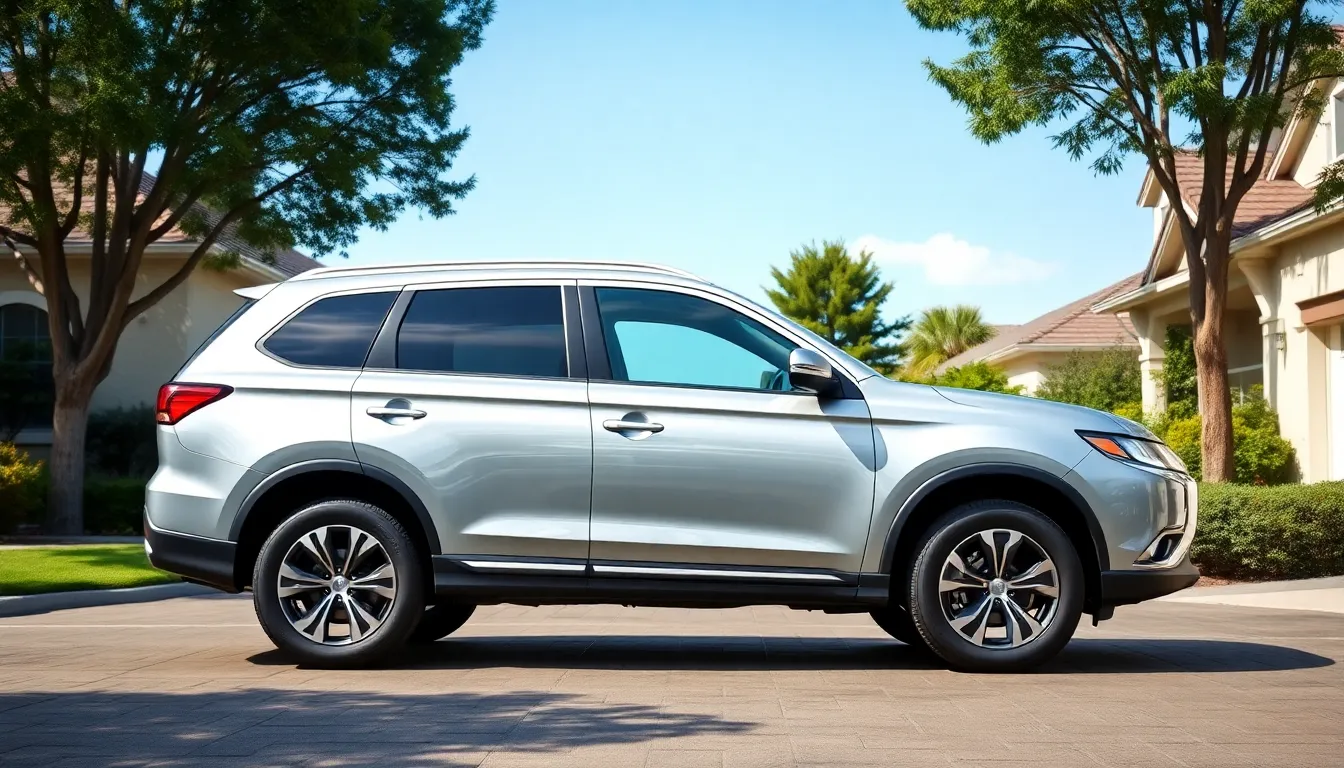
The 2020 Mitsubishi Outlander presents an attractive entry point in the three-row SUV market with pricing that ranges from $13,495 to $21,998 for used models. Base MSRP for new models started at $25,795, positioning the Outlander as one of the more affordable options in its class. Adding all-wheel drive increases the price by $1,500, which remains competitive compared to other three-row SUVs.
Value emerges from several key areas where the Outlander delivers more than its price suggests. Standard third-row seating sets it apart from many competitors who charge extra for this family-friendly feature. The 10-year/100,000-mile powertrain warranty provides exceptional coverage that exceeds industry standards and reduces long-term ownership anxiety.
Budget-conscious families find important appeal in the Outlander’s warranty protection, especially when compared to competitors offering shorter coverage periods. This extended warranty coverage translates to real savings on potential repairs and maintenance costs over the vehicle’s lifetime. Certified pre-owned models retain warranty benefits, making used Outlanders particularly attractive options.
But, the value proposition faces challenges in several areas that buyers must consider. Interior materials feel cheap according to multiple reviews, which can impact the ownership experience even though the attractive price point. Outdated infotainment systems and bland exterior styling create competitive disadvantages against similarly priced rivals offering more modern features.
| Feature | Outlander Value | Competitive Position |
|---|---|---|
| Starting Price | $25,795 | Below average |
| Powertrain Warranty | 10 years/100k miles | Industry leading |
| Third Row Standard | Yes | Advantage |
| Interior Quality | Below average | Disadvantage |
| Infotainment | Outdated | Disadvantage |
The Outlander’s strongest value arguments center on practical family needs rather than luxury or performance expectations. Families prioritizing reliability, warranty coverage, and basic functionality over premium features discover solid value in this approach. Cost of ownership remains low due to the extensive warranty and Mitsubishi’s reputation for dependable vehicles.
Resale values for the Outlander typically lag behind competitors like the Honda Pilot and Toyota Highlander, which affects the total cost of ownership calculation. This depreciation pattern makes used Outlanders excellent values for secondary buyers while potentially impacting original owners’ returns. The trade-off between initial affordability and long-term value retention requires careful consideration based on individual ownership plans.
Major Pros of the 2020 Mitsubishi Outlander

The 2020 Mitsubishi Outlander delivers impressive standard features that make it stand out in the competitive three-row SUV market. Standard three-row seating comes included across all trim levels, providing families with the space they need without paying extra fees. This generous approach to standard equipment extends throughout the vehicle’s feature set.
Ride quality represents one of the Outlander’s strongest attributes for daily driving. Smooth operation characterizes both highway cruising and handling rough terrain, ensuring passenger comfort remains consistent. The suspension system effectively absorbs road imperfections while maintaining stable handling characteristics.
Climate control systems function exceptionally well across the cabin space. Front and rear vents distribute air efficiently throughout all three rows, allowing passengers to adjust temperatures easily. The system responds quickly to input changes and maintains consistent temperatures even during extreme weather conditions.
Advanced safety technologies come standard on every 2020 Outlander trim level. Forward Collision Mitigation with Pedestrian Detection actively monitors traffic ahead and can apply brakes automatically when necessary. Lane Departure Warning alerts drivers when the vehicle drifts from its lane without signaling, while Automatic High Beam Control adjusts headlight intensity based on oncoming traffic.
Outward visibility ranks among the best in the midsize SUV class. Large windows and strategically positioned pillars create excellent sightlines in all directions. Drivers can easily monitor blind spots and navigate through crowded parking areas with confidence.
Comfort enhancements add practical value to the ownership experience. Power-adjustable lumbar support helps drivers find optimal seating positions during long trips. Additional USB ports throughout the cabin keep devices charged, with rear passengers having convenient access to charging capabilities. These features combine to create a more enjoyable driving environment for all occupants.
| Feature Category | Standard Equipment | Benefit |
|---|---|---|
| Seating | Three-row configuration | Accommodates 7 passengers |
| Safety | Forward Collision Mitigation | Automatic emergency braking |
| Safety | Lane Departure Warning | Driver awareness enhancement |
| Safety | Automatic High Beam Control | Improved nighttime visibility |
| Comfort | Power lumbar support | Driver ergonomics |
| Technology | Multiple USB ports | Device charging convenience |
Significant Cons of the 2020 Mitsubishi Outlander
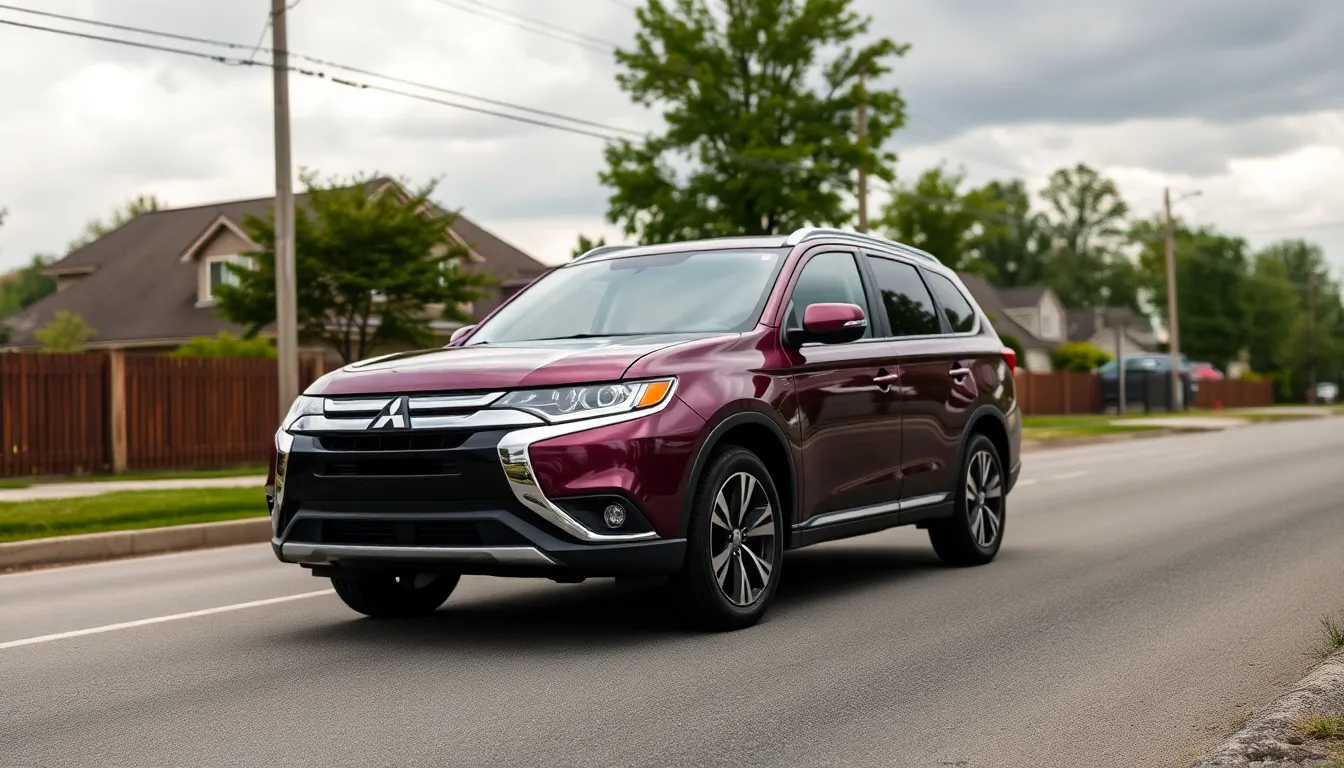
Interior materials throughout the 2020 Outlander feel distinctly cheap and low-quality, creating an immediate impression that compromises the overall cabin experience. We’ve found that passengers frequently comment on the uncomfortable seating during extended drives, particularly in the second and third rows where cushioning proves inadequate for longer journeys.
Performance issues dominate the driving experience with sluggish acceleration that makes highway merging and passing maneuvers challenging. Braking systems exhibit a squishy feel that reduces driver confidence, while the overall braking performance falls short of class standards for stopping distance and pedal responsiveness.
Powertrain reliability concerns have emerged across multiple model years, with documented engine problems affecting performance consistency. Electrical system malfunctions create frustrating ownership experiences, often requiring multiple dealership visits to diagnose and resolve recurring issues.
Maintenance costs escalate due to premature brake wear that forces earlier replacement intervals than competing vehicles in the same class. Automatic transmission failures have been documented in various owner reports, creating expensive repair bills that can reach several thousand dollars outside warranty coverage.
Climate control systems suffer from blower motor failures that compromise heating and cooling effectiveness throughout the cabin. We’ve observed that these failures typically occur within the first 60,000 miles, creating uncomfortable driving conditions during extreme weather periods.
| Component Issue | Typical Occurrence | Impact Level |
|---|---|---|
| Premature brake wear | 30,000-45,000 miles | High maintenance cost |
| Automatic transmission failure | 50,000-70,000 miles | Major repair expense |
| Blower motor failure | 40,000-60,000 miles | Comfort degradation |
| Electrical system issues | Various intervals | Reliability concerns |
| Engine problems | 35,000-65,000 miles | Performance impact |
Cabin noise levels exceed acceptable standards for the midsize SUV segment, with road and wind noise penetrating the interior even at moderate highway speeds. Infotainment system graphics appear outdated compared to current technology standards, while touchscreen responsiveness lags behind user expectations for modern vehicles.
How It Compares to Competitors
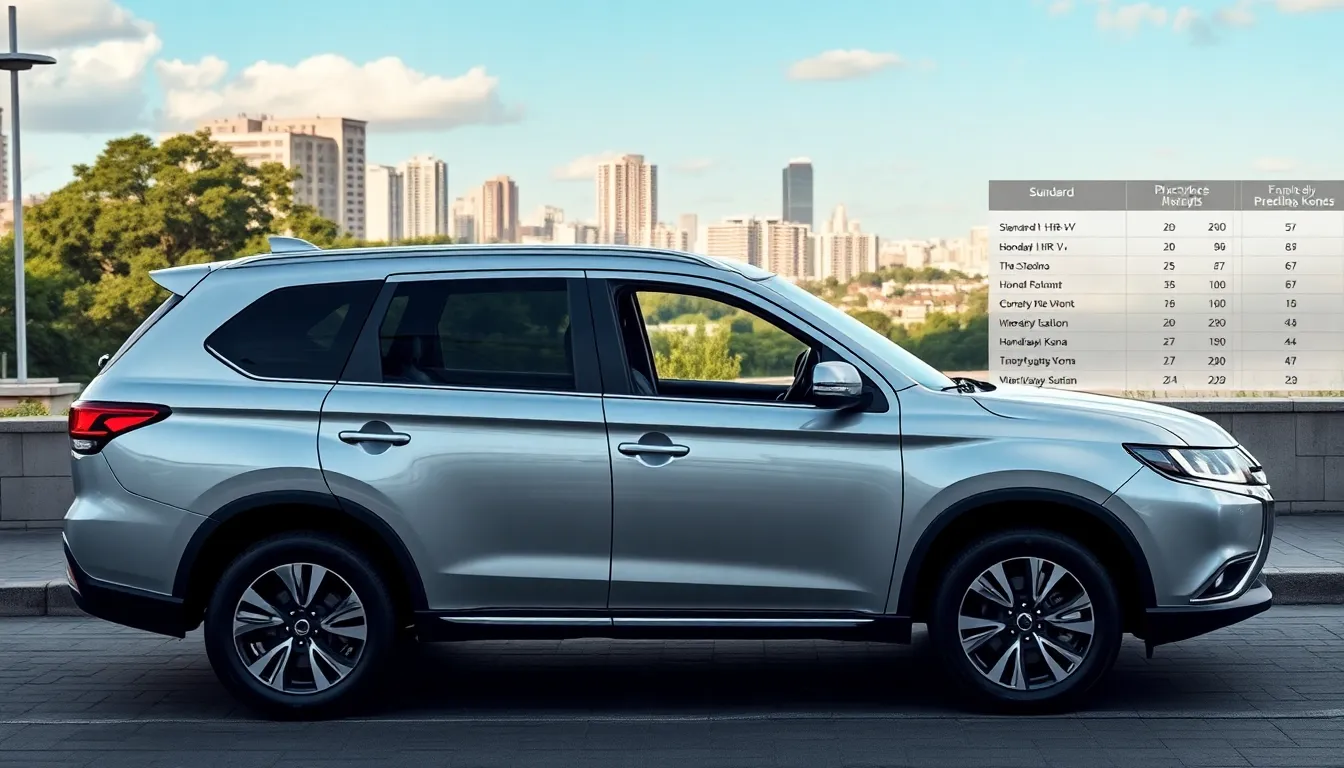
The 2020 Mitsubishi Outlander faces formidable competition in the crowded compact SUV segment, particularly against established models like the Honda HR-V and Hyundai Kona. Competitive analysis reveals important gaps in our Outlander’s market positioning when measured against these popular alternatives.
Standard third-row seating distinguishes the Outlander from most compact competitors, as vehicles like the Honda HR-V and Hyundai Kona offer only five-passenger configurations. This seating advantage provides families with expanded capacity that competitors simply can’t match in the same price range.
Interior quality represents our most important competitive disadvantage, with the Outlander’s cheap and outdated cabin materials falling short of the Honda HR-V’s refined interior design and the Hyundai Kona’s modern aesthetic. Competitors deliver superior tactile experiences through better material selection and more cohesive design execution.
Fuel efficiency comparisons favor competitors substantially, as the Outlander’s combined rating of 22-27 mpg trails behind the Honda HR-V’s impressive 28-34 mpg and the Hyundai Kona’s competitive 27-33 mpg. These efficiency gaps translate to higher ownership costs over time for Outlander drivers.
| Vehicle | Combined MPG | Starting Price | Third Row |
|---|---|---|---|
| 2020 Mitsubishi Outlander | 22-27 | $25,795 | Standard |
| Honda HR-V | 28-34 | $21,520 | Not Available |
| Hyundai Kona | 27-33 | $21,300 | Not Available |
Plug-in hybrid availability gives the Outlander a unique technological edge over traditional competitors, offering eco-conscious buyers an electrified option that neither the Honda HR-V nor Hyundai Kona provide in their standard lineups.
Performance metrics reveal the Outlander’s weakness in acceleration, with our 9.6-second 0-60 mph time significantly slower than the Honda HR-V’s 8.9 seconds and the Hyundai Kona’s 7.7 seconds. Competitors deliver more captivating driving experiences through better engine tuning and transmission responsiveness.
Technology integration shows mixed results, as the Outlander’s updated 8.0-inch infotainment touchscreen on higher trims competes adequately with similar systems in the Honda HR-V and Hyundai Kona, though overall system responsiveness and graphics quality lag behind both competitors.
Warranty coverage provides the Outlander’s strongest competitive advantage, with our 10-year powertrain warranty significantly exceeding the Honda HR-V’s 5-year coverage and the Hyundai Kona’s standard protection period. This extended coverage offers peace of mind that competitors cannot match.
Conclusion
The 2020 Mitsubishi Outlander stands as a practical choice for budget-conscious families who prioritize warranty coverage and third-row seating over premium features. While we acknowledge its limitations in performance and interior quality this SUV delivers on its core promise of affordable family transportation.
We believe the Outlander’s greatest strength lies in its exceptional 10-year powertrain warranty which provides peace of mind that many competitors can’t match. For families seeking reliable transportation without very costly the Outlander presents a compelling value proposition even though its compromises.
Eventually your decision should weigh the importance of advanced features against long-term reliability and affordability. If you can overlook the sluggish performance and basic interior materials the Outlander offers dependable family hauling with one of the industry’s best warranty packages.
Frequently Asked Questions
What is the starting price of the 2020 Mitsubishi Outlander?
The 2020 Mitsubishi Outlander starts at $25,795 for the base ES trim. Adding all-wheel drive increases the price by $1,500. The Outlander is positioned as an affordable three-row SUV option for families seeking practicality and value over premium features.
How many people can the 2020 Mitsubishi Outlander seat?
The 2020 Mitsubishi Outlander seats seven passengers across three rows. It offers 105.1 cubic feet of passenger volume, though the third row is tight and best suited for children rather than adults. The seating configuration prioritizes cargo capacity over passenger comfort.
What engine options are available in the 2020 Mitsubishi Outlander?
The standard engine is a 2.4-liter four-cylinder producing 166 horsepower. An optional V6 engine is available on the top GT trim, offering better acceleration but reduced fuel efficiency. The base engine provides sluggish performance with noisy operation under acceleration.
What is the fuel economy of the 2020 Mitsubishi Outlander?
The 2020 Mitsubishi Outlander achieves approximately 23 city/28 highway mpg with the base engine, resulting in a combined rating of 22-27 mpg. This fuel economy lags behind competitors like the Honda HR-V (28-34 mpg) and Hyundai Kona (27-33 mpg).
What safety rating does the 2020 Mitsubishi Outlander have?
The NHTSA awarded the 2020 Mitsubishi Outlander four out of five stars for overall safety. It includes standard active safety features across all trims, such as forward collision warning and automated emergency braking, reflecting solid structural integrity and comprehensive safety technologies.
What warranty coverage does the 2020 Mitsubishi Outlander offer?
The 2020 Mitsubishi Outlander comes with one of the most comprehensive warranty packages in the industry, featuring a 10-year/100,000-mile powertrain warranty. This extensive coverage provides peace of mind regarding reliability and makes it particularly attractive for budget-conscious families.
What trim levels are available for the 2020 Mitsubishi Outlander?
The 2020 Mitsubishi Outlander offers three trim levels: Base ES, Mid-Level SE, and Top GT. Each trim features varying exterior and interior features, with higher trims offering updated infotainment systems and advanced safety features, though technology graphics are considered outdated.
How does the 2020 Mitsubishi Outlander compare to competitors?
Compared to competitors like the Honda Pilot and Toyota Highlander, the Outlander offers standard third-row seating and an excellent warranty. However, it falls short in interior quality, fuel efficiency, and performance. Its main advantages are affordability and comprehensive warranty coverage.











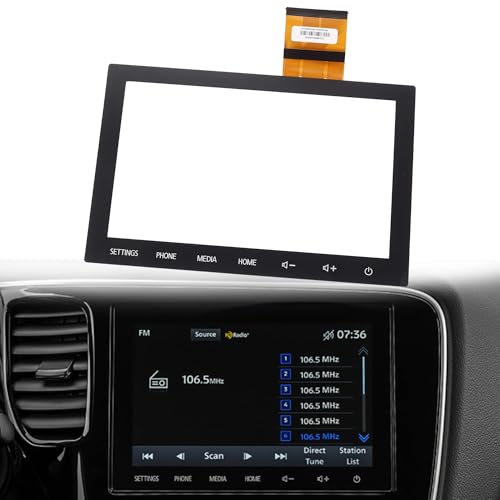
![[2G+64G] Car Radio for Mitsubishi Outlander 2018 2019 2020 2021,](https://m.media-amazon.com/images/I/41BsfcBOuFL._SL500_.jpg)




